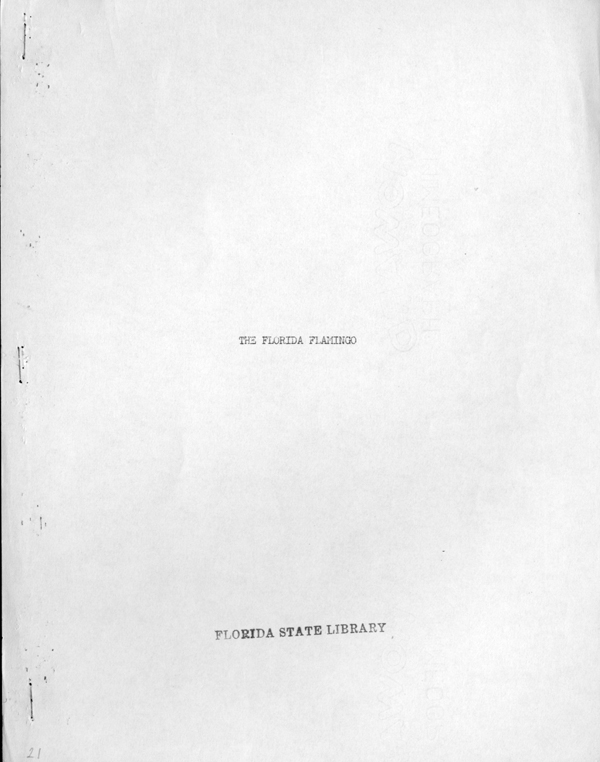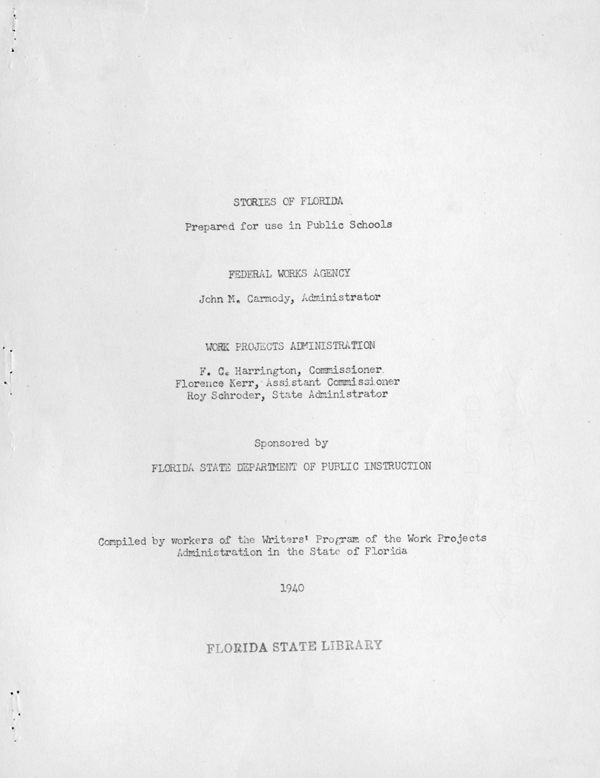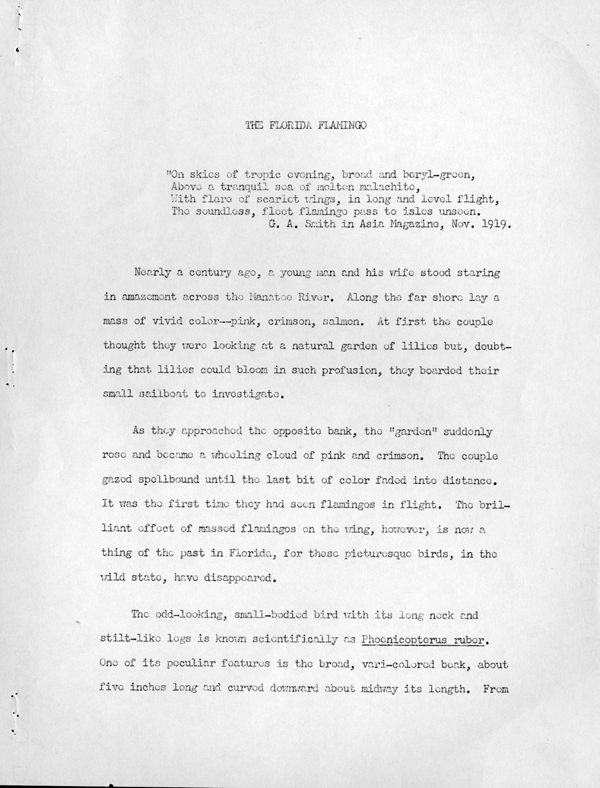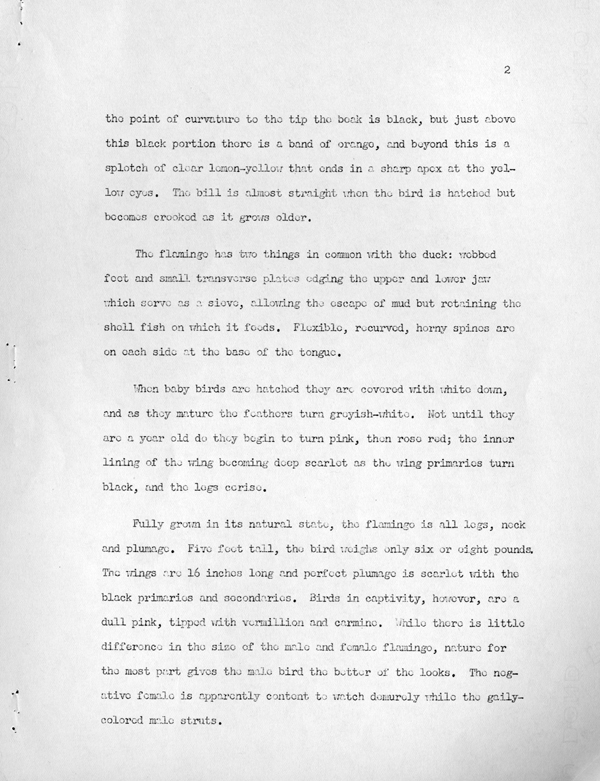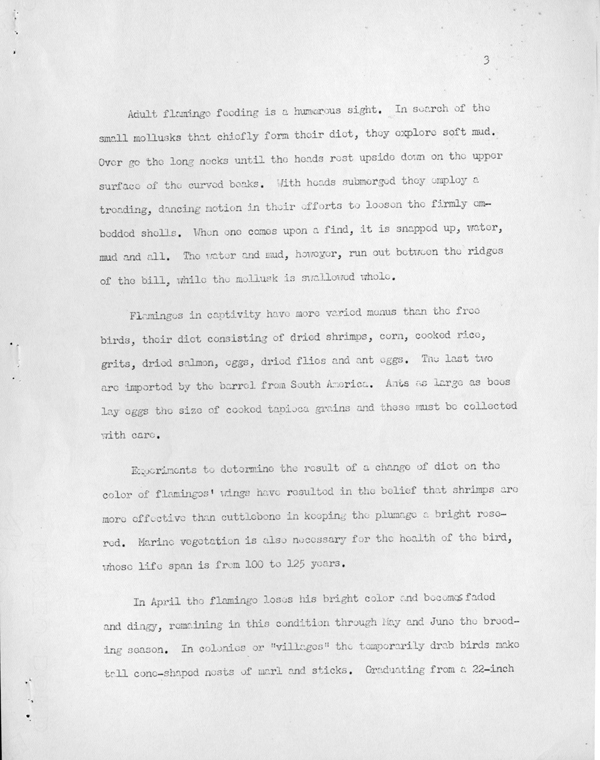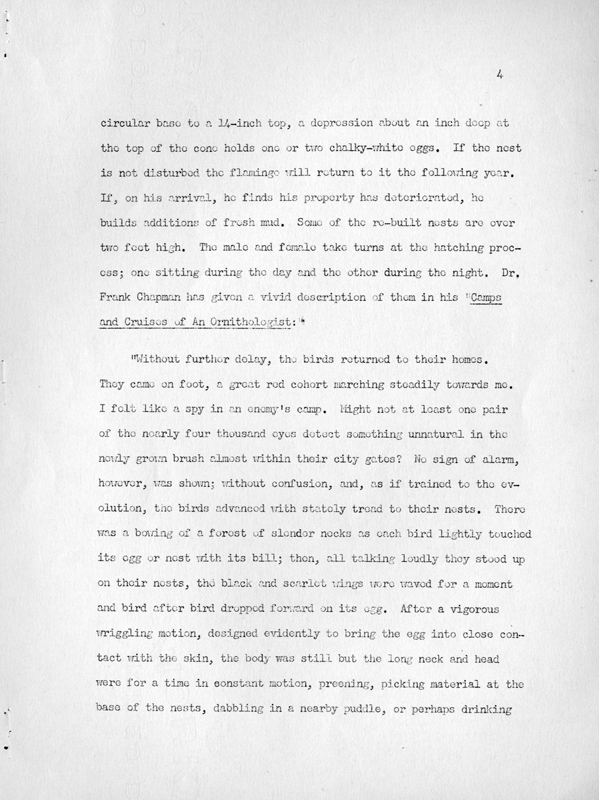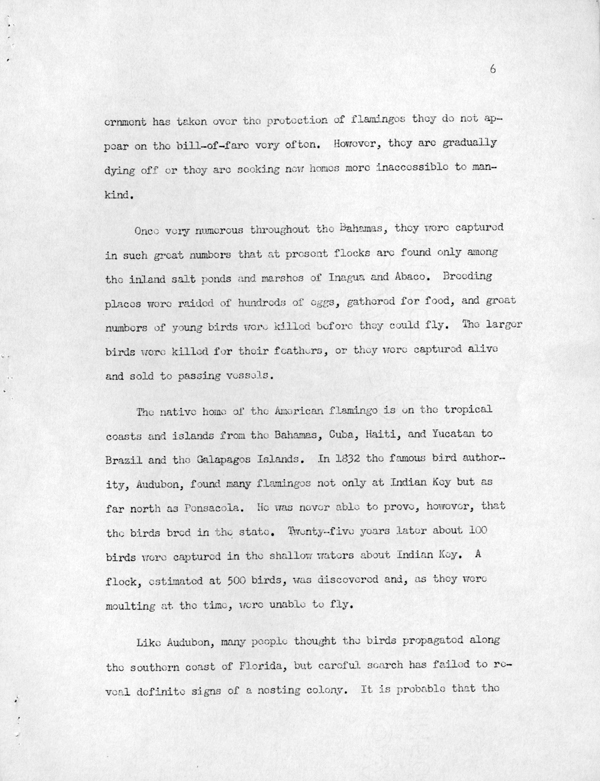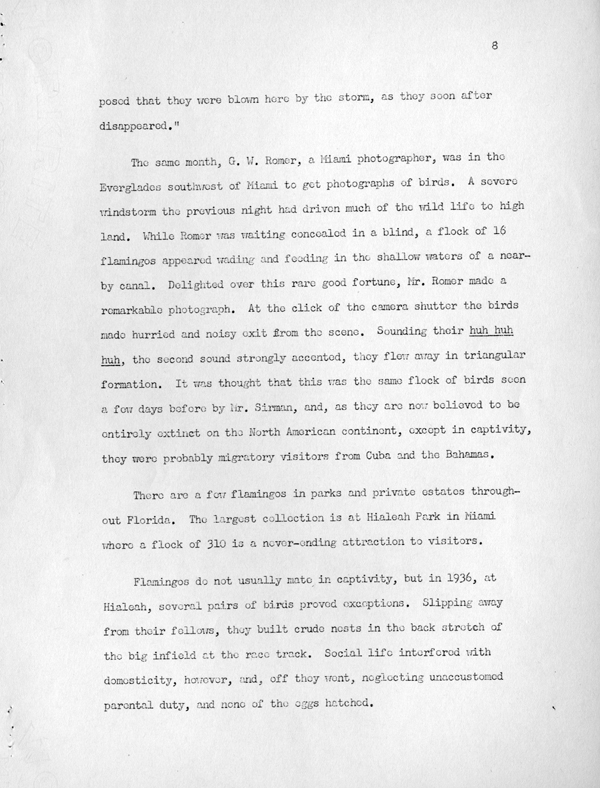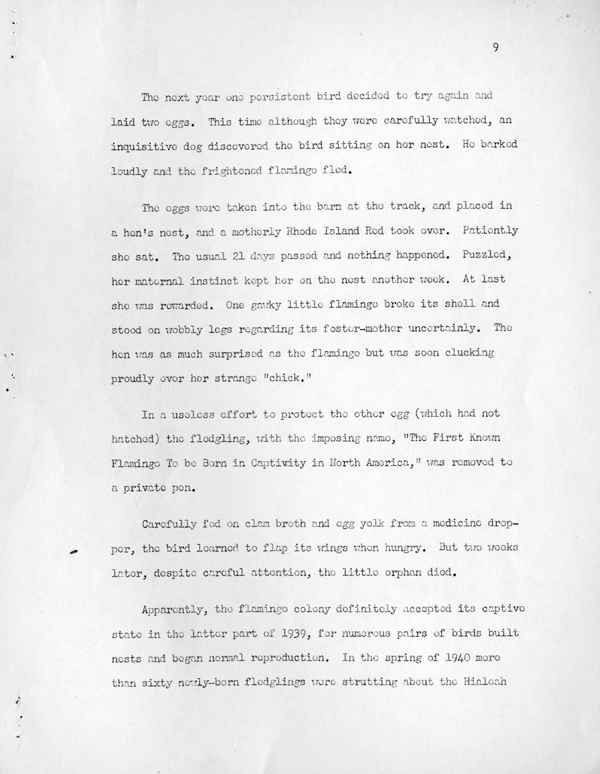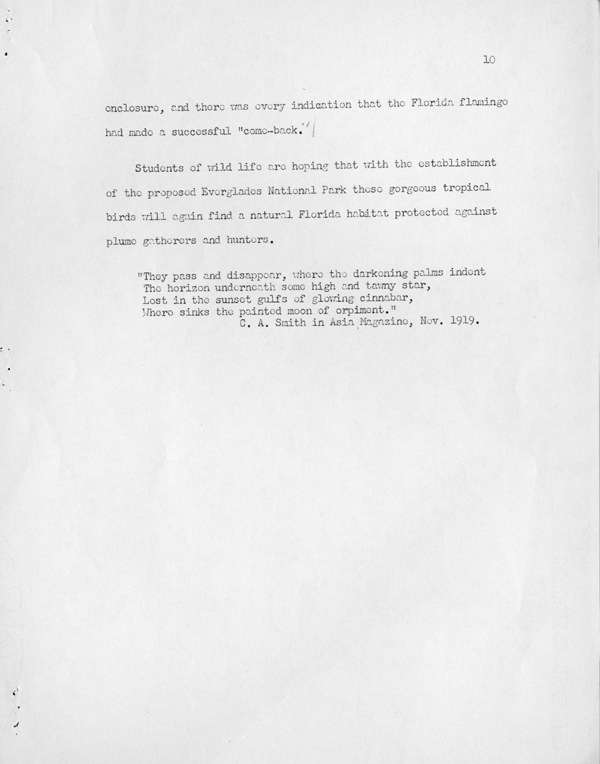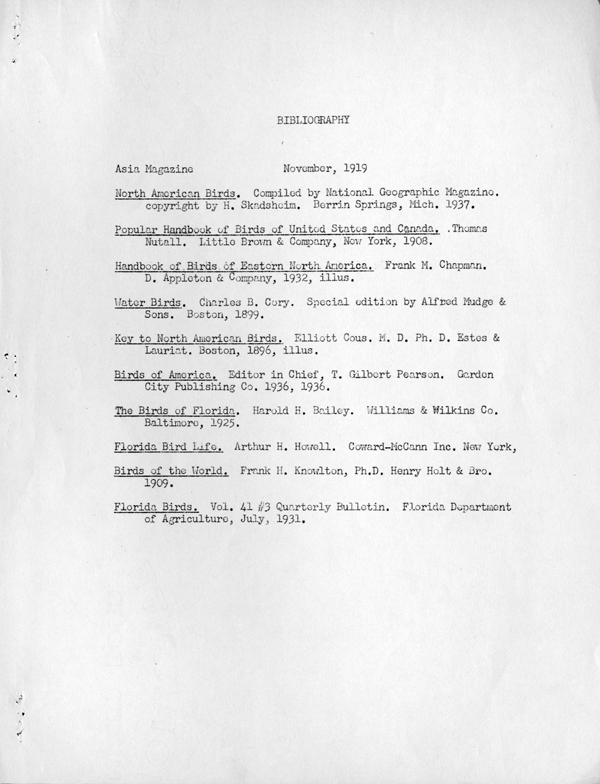Florida Memory is administered by the Florida Department of State, Division of Library and Information Services, Bureau of Archives and Records Management. The digitized records on Florida Memory come from the collections of the State Archives of Florida and the special collections of the State Library of Florida.

State Archives of Florida
- ArchivesFlorida.com
- State Archives Online Catalog
- ArchivesFlorida.com
- ArchivesFlorida.com
State Library of Florida
Related Sites
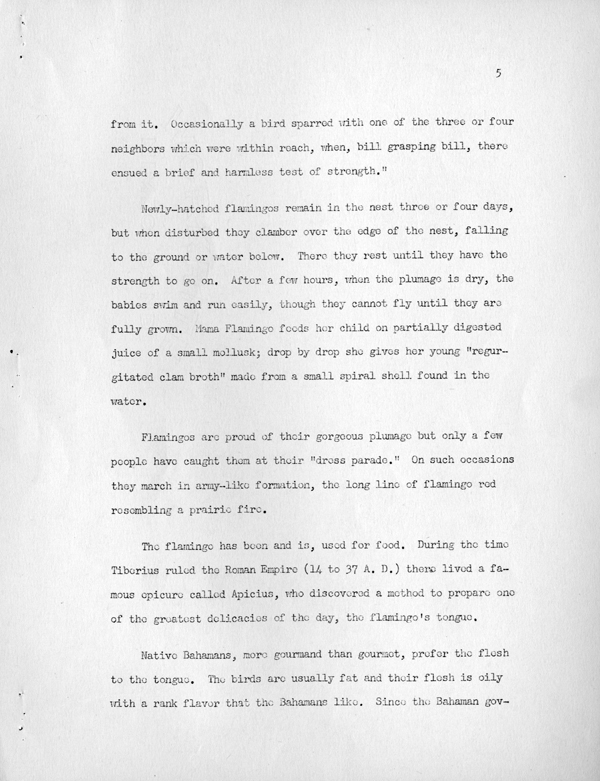
Description of previous item
Description of next item

Title
Published Date
from it. Occasionally a bird sparred with one of the three or four
neighbors which were within reach, when, bill grasping bill, there
ensued a brief and harmless test of strength."
Newly-hatched flamingos remain in the nest three or four days,
but when disturbed they clamber over the edge of the nest, falling to the
ground or water below. There they rest until they have the strength to
go on. After a few hours, when the plumage is dry, the babies swim and
run easily, though they cannot fly until they are fully grown. Mama
Flamingo feeds her child on partially digested juice of a small mollusk;
drop by drop she gives her young "regurgitated clam broth" made from a
small spiral shell found in the water.
Flamingos are proud of their gorgeous plumage but only a few
people have caught them at their "dress parade." On such occasions they
march in army-like formation, the long line of flamingo red resembling a
prairie fire.
The flamingo has been and is, used for feed. During the time
Tiberius ruled the Roman Empire (14 to 37 A. D.) there lived a famous
epicure called Apicius, who discovered a method to prepare one of the
greatest delicacies of the day, the flamingo's tongue.
Native Bahamans, more gourmand than gourmet, prefer the flesh
to the tongue. The birds are usually fat and their flesh is oily with a rank
flavor that the Bahamans like. Since the Bahaman gov-
Title
Subject
Description
Source
Date
Contributor
Format
Language
Type
Identifier
Published Date
Image URL
Thumbnail
Transcript Path
Image Path
Image Path - Large
Chicago Manual of Style
The Florida Flamingo. 1940. State Archives of Florida, Florida Memory. <https://www.floridamemory.com/items/show/181517>, accessed 21 December 2025.
MLA
The Florida Flamingo. 1940. State Archives of Florida, Florida Memory. Accessed 21 Dec. 2025.<https://www.floridamemory.com/items/show/181517>
AP Style Photo Citation

 Listen: The Blues Program
Listen: The Blues Program